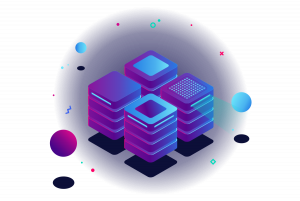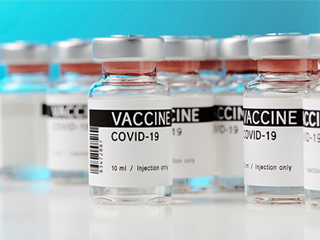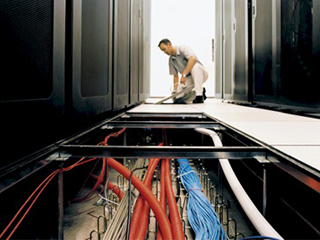Organizations need to be disciplined if they want to keep their data development expenses down because data construction prices are rising every year. The average enterprise data center costs between $10 million and $12 million per megawatt to build, with the first few megawatts of deployment, often being the most expensive. Furthermore, the average cost of an edge data center ranges from $8 million to $9 million.
The Data Center Construction Boom
In 2020 the demand for data centers had a significant 72.9% increase vs to 2019, based on JLL research. The construction pipeline also reached near-record levels, with 611.3 megawatts (MW) under construction in the US— this record is 200% vs in 2019.
Northern Virginia, where 326.0 MW is now under construction, as well as other hot markets including Atlanta, Phoenix, and Chicago, continue to see a lot of activity. Frankfurt, Germany’s industry leader, is now leading the region with 117.8 MW under construction.
Datacenter owners, on the other hand, must know how to negotiate escalating construction and operational costs in order to grow responsibly and maintain profitability. That starts with knowing the factors driving up costs.
Why Data Center Costs Are On The Rise
Building data centers were already prohibitively expensive. An average data center construction costs between $125 and $200 per square foot. The main cost hog, though, is the infrastructure. Depending on the power, redundancy, and availability, and N+1 data center with a 3.5 MW capacity, costs between $280 and $350 per square foot or more, depending on power, redundancy, and availability.
Datacenter building is being hampered by new cost demands. With pandemic-related trade slowdowns and shortages driving up costs and hurting lead times, product availability and pricing have recently reached historic levels. For example, since last spring, lumber costs have soared by roughly 250%. Costs of copper and various steels have also risen in recent years.
Furthermore, with such a strong construction pipeline, industry analysts are concerned that trained labor is in limited supply. Because data centers are so sensitive, owners and operators want to use skilled employees who have worked in critical situations before to build and operate them. Finding the right workers is a constant challenge in the industry, and depending on market conditions, it can result in higher labor costs.
According to the U.S. Chamber of Commerce, the overall average data center costs $215.5 million to build and includes 165,141 net rentable square feet.
The industry growth pushes many organizations to look for more cost-effective methods for construction. But before we examine how they’re doing that, let’s take a step back and look more granularly at how data center costs break down.
- IT equipment – $157.1 million
- Land acquisition – $13.4 million
- Construction – $45 million
1. IT Equipment
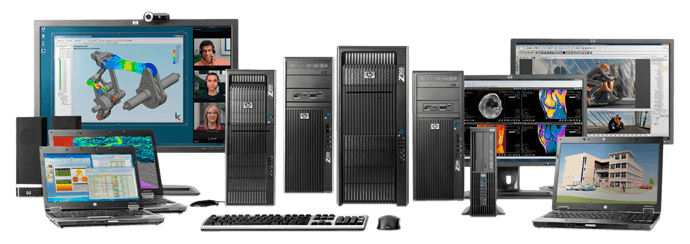
Photo Credit: lkcomputers.com
A lot of IT equipment, such as racks, servers, switches, and routers, will be required for your data center. You’ll have to spend on network infrastructure, software, and computational components to connect these devices, as well as cabling.
Although you may be able to get a discount on a large order, the amount you spend on IT equipment will be determined by the size of your data center, the demands of your organization, and your preferences. For example, although one company may only desire the best equipment, another may prefer to use computing resources in a more cost-effective manner.
There isn’t a right or wrong response here; it’s entirely up to your company’s discretion. What charges are added to the final tally, and that’s just for equipment, will depend on the option you select.
2. Land Acquisition
In an ideal world, your company would already own the land on which you want to build a data center, and you would have bought it at a discount price years ago.
However, not every business is that fortunate.
For the most part, rural areas are preferable to metropolitan ones when deciding where to put your data center. In fact, according to CBRE, the cost of creating a data center in a high-cost city like Boston or Silicon Valley might be 45% higher than in a low-cost area like Tulsa or Charlotte. Furthermore, if your data center is large enough, you may be eligible for tax breaks for adding jobs to the area.
When it comes to creating a data center, don’t just think about how much it will cost. Once the building is over, you’ll need to figure out how you’ll keep your data center up and running. Rural areas rarely have the same level of infrastructure as urban ones, such as reliable electricity or internet connection. Over time, this could result in higher data center construction costs.
Colocation is another alternative for hosting your data center and lowering costs, depending on your organization’s unique demands. Because you are renting a facility, colocation does not require a large initial investment. As a result, both the cost of land acquisition and the cost of building can be reduced. The trade-off is that you’re handing the operational availability of your company to a third party, which comes with its own set of hazards.
3. Construction

Photo Credit: cloudinary.com
The cost of establishing a data center’s shell, according to Microsoft and Forrester Research, is around $200 per square foot. Taxes and building permits, among other things, will add to these expenditures in a significant way. This raises the price by $70 per square foot.
The actual construction of a new data center is often the most time-consuming part of the process, and how quickly it can be completed is determined by a number of factors, including your capacity to find workers, weather delays, change orders, and unforeseen events like the COVID-19 pandemic. Unfortunately, the longer your data center project takes to complete, the more expensive it will become.
Given all these, let’s break down some ways to reduce data center construction costs to help fit within the forecasted budget without having to sacrifice the quality of the facility.
Ways To Reduce Data Center Construction
1. Experienced Estimator
One of the most crucial aspects of any construction project is a proper estimation, which should be accomplished before any work begins. This is an easy way to know if the project is sticking within the budget.
While there are a lot of useful internet calculators out there, they can’t really do a good job of capturing the entire picture that an expert estimator can. For every client, however, specialist estimators will not just crunch the same numbers. Rather, they’ll use their knowledge to come up with cost-effective solutions that provide the best value for the money.
In the recent data center business, make sure to have expert data center building providers who have considerable knowledge on all types and sizes of projects. Because of their previous experience, they will be able to provide a detailed estimate in a short amount of time. It will also provide peace of mind that everything from permits to finance plans, as well as other indirect costs associated with building, are correctly accounted for.
Changing prices of raw resources such as steel, oil, cement, and wood need also to be considered. Many people may not be aware of or able to effectively control the effects of these shifting factors on their construction expenses.
2. Consider Which Type Of Data Center You Need
There are many different sorts of data centers to choose from, each with its own set of advantages. Whether creating a tiny data center or a much larger data center, it’s critical to understand exactly what is needed to avoid overspending. Here are a few of the choices:
-
- Hyperscale Data Centers
The company that supports the Hyperscale Data Center is the one that owns and operates it. Individuals and corporations can benefit from their sophisticated, scalable apps and storage portfolio services. They’re required for cloud and big data storage, with a minimum of 5,000 servers connected to 500 cabinets. The high fiber count across the network, which distinguishes them from other smaller data centers, is another important feature.
-
- Enterprise Data Centers
Enterprise Data Centers are owned and controlled by the same company that supports them, however, they are often smaller and less powerful than Microsoft, Google, and Apple hyperscale data centers.
-
-
- Telecom Data Centers

- Telecom Data Centers
-
Telecom Data Centers are primarily responsible for content distribution, mobile, and cloud services, and require a hi
gh level of connectivity.
-
- Colocation Data Centers
Another wonderful alternative that we will address at the very end of this piece is colocation data centers.
3. Renegotiate The Contracts
It’s a fantastic moment to rethink the contracts if its “in-between” data centers. Examine the contracts for hardware, software, leasing, maintenance, and support in detail. Examine the unnecessary and try to negotiate reduced payment terms for others. During difficult economic times, vendors are accustomed to evaluating contracts, and doing so can help save money on the costs of owning and maintaining the data center once it has been built or refurbished.
4. Consider Colocation
Imagine colocation facilities as data center apartment complexes, which is a simple approach to understanding them. One data center owner often sells space, power, and cooling to a variety of customers. This allows enterprises to develop and expand their operations even if they don’t have the financial capacity to build their own data center. Many firms that are in need of data center space find this to be a very appealing alternative because of the low cost, minimal complexity, and technical support available at some facilities.
Cost-Efficient Monitoring With AKCP

Many data centers are unaware of their current equipment’s efficiency or utilization rate, which can be problematic when it comes time to expand. Companies buy new equipment to grow capacity rather than optimize current equipment and get the most out of their investments, which increases space use and equipment and power expenses. This type of expenditure is reduced or eliminated by real-time monitoring and understanding of existing equipment and consumption.
AKCPro Server is our world-class central monitoring and management software. And it is suitable for a wide range of monitoring applications. Free to use for all AKCP devices (sensors, gateways, and sensorprobe base units). Monitor your infrastructure in real-time, whether it be a single building or remote sites over a wide geographic area. Integrate third-party devices with, Modbus, SNMP, and ONVIF compatible IP cameras.
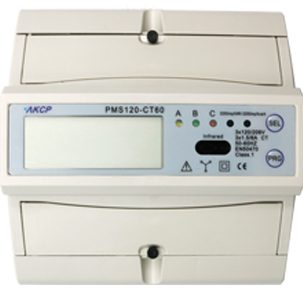
Power Monitoring Sensor
AKCPro Server shows live PUE calculations. Using power meters the total facility and IT loads are used as the input. The resulting PUE is displayed dynamically. As your facility loads change, the live PUE numbers will also update. Make changes in your facility and see instantly how much power you are saving. With the addition of cabinet thermal maps, you can ensure maximum PUE, while not violating ASHRAE recommended inlet air temperatures. Cabinet thermal maps also monitor the △T across the rack to ensure cooling is being utilized.
The below PUE and DCiE calculator will allow you to get a handle on what your current PUE is, associated power, and carbon footprint costs. Simply input your total facility power consumption, and your IT power consumption, as well as your electrical power costs per kWh. If you don’t know your total power and IT power you can estimate it by the power ratings of your cooling system, and servers. For accurate measurements, power meters can be installed.
The AKCPro Server Live PUE Calculator helps improve PUE and leads to huge cost savings. Also, deploying strategies such as hot or cold aisle containment were possibly using free cooling from outside air, adjusting air conditioning set points, and improving airflow management will all aid in reducing your PUE numbers, saving you money, and lowering your carbon footprint.
Conclusion
Whether an organization manages data in-house, in separate buildings within a complex, or in multiple towns, states, or countries, or uses private cloud or colocation to save money, they must manage their data centers to ensure that they are cost and resource-effective.
The data center houses a large portion of an organization’s operations. It is vital to have real-time, continuous inspection and analysis of data center assets to view both the minutiae and the big picture in order to protect the firm and its investment. Given the high cost of operating a data center, any cost savings can provide a significant competitive edge.
Reference Links:
https://www.us.jll.com/en/views/data-center-leaders-ready-to-tackle-rising-construction-costs
https://info.pcxcorp.com/blog/how-much-will-a-data-center-cost-you


